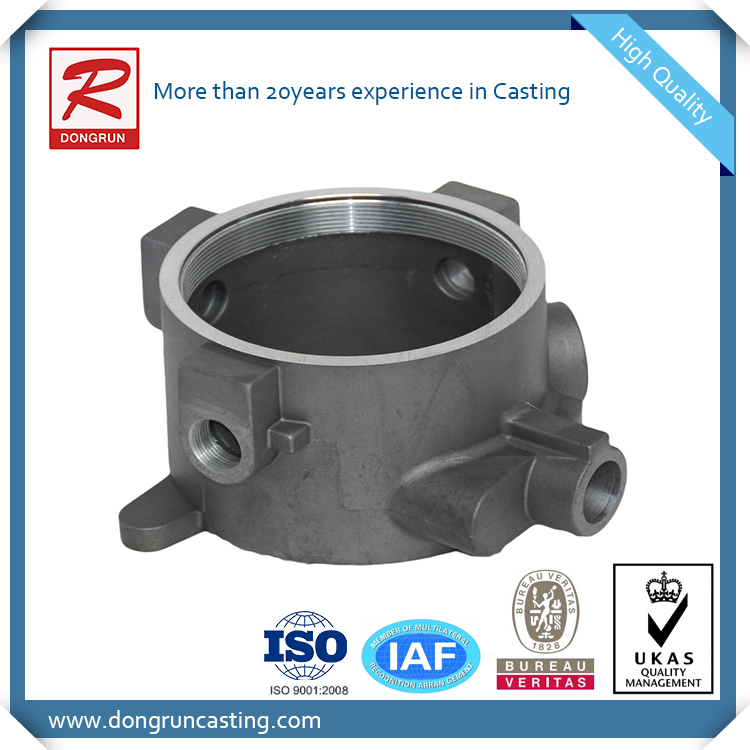The process of Cast Aluminum Meter Housings

Process of Cast Aluminum Meter Housings
Cast aluminum meter housings are essential components in various applications, particularly in the energy sector for enclosing and protecting metering devices. The casting process for aluminum meter housings involves several key steps that ensure the final product is robust, durable, and precise. Here is an in-depth look at the process:
1. Design and Pattern Making
Design Specifications: The process begins with designing the meter housing using CAD software. The design includes all dimensions, tolerances, and features required for the final product.
Pattern Making: A pattern is created based on the design. Patterns can be made from wood, plastic, or metal and are used to form the mold cavity in the subsequent steps.
2. Mold Making
Material Selection: The mold is typically made from sand (sand casting) or a metal mold (die casting), depending on the casting method used.
Sand Casting: If sand casting is used, a sand mold is created by packing sand around the pattern. The sand is mixed with a binder to help it hold its shape.
Die Casting: For die casting, a steel mold (die) is precisely machined to the shape of the meter housing. Die casting molds are reusable and used for high-volume production.
3. Melting and Pouring
Melting Aluminum: Aluminum is melted in a furnace at a temperature of around 660°C (1220°F). The molten aluminum must be free from impurities and properly alloyed to ensure the required mechanical properties.
Pouring: The molten aluminum is poured into the mold cavity. In sand casting, the aluminum is poured manually or using a ladle. In die casting, the molten aluminum is injected into the mold under high pressure.
4. Solidification and Cooling
Solidification: The aluminum cools and solidifies within the mold. The cooling rate can significantly affect the microstructure and properties of the cast aluminum.
Cooling Time: The mold and casting are allowed to cool down to room temperature. In die casting, cooling channels may be used to accelerate the cooling process.
5. Mold Removal
Sand Casting: The sand mold is broken apart to retrieve the solidified aluminum casting. The sand can be recycled and reused for future molds.
Die Casting: The die is opened, and the casting is ejected. Since the die is reusable, it can be used for multiple casting cycles.
6. Trimming and Cleaning
Trimming: Excess material, such as sprues and runners, is trimmed off the casting. This can be done manually or using automated equipment.
Cleaning: The casting is cleaned to remove any remaining sand, scale, or other residues. Methods include abrasive blasting, tumbling, or chemical cleaning.
7. Heat Treatment (Optional)
Heat Treatment: The casting may undergo heat treatment processes like annealing, quenching, or aging to enhance its mechanical properties, such as strength and hardness.
8. Machining and Finishing
Machining: Precision machining operations such as drilling, milling, and turning are performed to achieve the final dimensions and tolerances required for the meter housing.
Finishing: Surface treatments such as anodizing, powder coating, or painting are applied to improve corrosion resistance and aesthetic appeal.
9. Inspection and Quality Control
Inspection: The final product undergoes thorough inspection and testing to ensure it meets all design specifications and quality standards. Non-destructive testing methods such as X-ray, ultrasonic, or dye penetrant inspection may be used.
Quality Control: Continuous quality control measures are implemented throughout the casting process to ensure consistency and reliability of the meter housings.
Summary
The casting process for aluminum meter housings involves a series of carefully controlled steps, including design, mold making, melting, pouring, solidification, mold removal, trimming, cleaning, optional heat treatment, machining, finishing, and rigorous inspection. Each step is crucial to ensure the production of high-quality, durable, and precise meter housings that meet the stringent requirements of various applications, particularly in the energy sector.
Dongrun Casting have 20000 square meters facility houses and 200 production & test equipment, From quotation and tooling design to casting and finished machining, we can work with you at every stage. We serves wide range of industries-from Fortune 500 corporations to small and midsize OEMs. Our products includes: Automotive&Trucking, Electric Utility & Communications, Metering System, Hydraulic Industry, Medical Devices, Lighting, Fuel and Gas Pressure, Furniture parts.
More Details : www.dongruncasting.com
